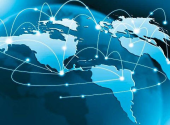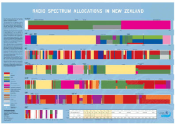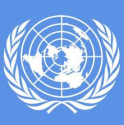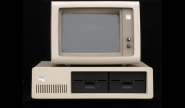-
About
- About Listly
- Community & Support
- Howto
- Chrome Extension
- Bookmarklet
- WordPress Plugin
- Listly Premium
- Privacy
- Terms
- DMCA Copyright
- © 2010-2025 Boomy Labs

 Charles Hamilton
Charles Hamilton
Listly by Charles Hamilton
We are creating a list of the Baby Boomer’s legacy for consideration by the incumbent generations and for research purposes related to an ongoing future of work effort. The question is less about what we have at hand and more about where we are headed from here. For better and for worse, here is our starting list:

While certainly not available to all, universal health coverage or universal care — is a health care system which provides health care and financial protection to all its citizens. It is organized around the principle providing of providing a package benefits to all members of a society with the end goal of providing financial risk protection, improved access to health services, and improved health outcomes. Such systems are not without great debate.

Harder come by today and even discontinued by some employers, a pension plan was envisaged as a fixed sum contract paid regularly to a person, typically following retirement from service. Retirement plans may be set up by employers, insurance companies, the government or other institutions such as employer associations or trade unions. If you’ve got one consider yourself privileged.

The Global Telecommunications System (GTS) is a global network for the transmission of meteorological data from weather stations, satellites and numerical weather prediction centres. The GTS consists of an integrated network of point-to-point circuits, and multi-point circuits which interconnect meteorological telecommunication centres. The circuits of the GTS are composed of a combination of terrestrial and satellite telecommunication links. It is the essential building block of the global economy.

The digital glue that connects us all, hosts this list is an unparalleled interconnected computer networks that use the standard Internet protocol suite to serve several billion users worldwide. It is a network of networks that consists of millions of private, public, academic, business, and government networks, of local to global scope, that are linked by a broad array of electronic, wireless, optical networking technologies and services.
The Internet has no centralized governance in either technological implementation or policies for access and usage yet it underpins whole industries and much of today’s global economy. Since 2001, the number of people connecting to the Internet went from about 350 Million to over 2 Billion People and we are at just at beginning stages of the full utilization of this system.

Spectrum management is the process of regulating the use of radio frequencies to promote efficient use and gain a net social benefit. The term radio spectrum typically refers to the full frequency range from 3 kHz to 300 GHz that may be used for wireless communication. Increasing demand for services such as mobile telephones and many others has required changes in the philosophy of spectrum management. Demand for wireless broadband has soared due to technological innovation, such as 3G and 4G mobile services, and the rapid expansion of wireless internet services.

Free trade is a policy by which a government does not discriminate against imports or interfere with exports by applying tariffs (to imports) or subsidies (to exports) or quotas. According to the law of comparative advantage, the policy permits trading partners mutual gains from trade of goods and services.

Innovation in antibiotics save lives and eliminate infections that can be difficult or impossible to treat any other way. But antibiotics aren't fool proof and we are constantly evolving their use. An antibacterial is an agent that inhibits bacterial growth or kills bacteria.[1] The term is often used synonymously with the term antibiotic(s). Today, however, with increased knowledge of the causative agents of various infectious diseases, antibiotic(s) has come to denote a broader range of antimicrobial compounds, including anti-fungal and other compounds.

The ongoing innovation around the mobile phone is changing the way our world connects and works. Connection via the now inexpensive and near ubiquitous cell phone is now a global phenomenon. Since about 2000 mobile phone subscribers went from around 750 Million to 5 billion and we are now at some 6 Billion mobile subscribers. Far more than a device for making and receiving telephone calls while moving around , the addition of modern mobile phones services such as text messaging, MMS, email, Internet access, short-range wireless communications (infrared, Bluetooth), have made todays smartphones indispensable. Today when we speak about mobility, we nearly always refer to the smartphone as a part of this new found freedom.

Although the United Nations was technically came into being the year before the official start of the baby boomer era (1945), it certainly made its impact through this generation. the United Nations is an international organization whose stated aims include promoting and facilitating cooperation in international law, international security, economic development, social progress, human rights, civil rights, civil liberties, political freedoms, democracy, and the achievement of lasting world peace.

The personal computers, tablets and smart devices we take for granted today and the microprocessors at the heart of these machines took their biggest step forward in the early 1960s at the tail end of the baby boomer decade, to become the foundation of the digital revolution.
Early PC owners usually had to write their own programs to do anything useful with the machinesas they lacked an operating system, but todays users. Today's users have access to a wide range of commercial software, freeware and free and open-source software, which is provided in ready-to-run from the Internet.
The microelectronics subfield at the core of personal computers and microelectronic devices has afforded greater and greater performance, while always delivering smaller, faster, and less expensive devices. From 1970 forward performance of in this technology area has followed a rule of thumb known as Moore's law- the observation that chip performance would double approximately every two years. Not only has this prediction held true, but the increasing lower cost of production has enabled computing power to reach billions of people. Since 2001, the number of people connecting to the Internet went from about 350 Million to over 2 Billion People.

Green Revolution refers to a series of research, development, and technology transfer initiatives, occurring between the 1940s and the late 1960s, that increased agriculture production worldwide, particularly in the developing world, beginning most markedly in the late 1960s.
